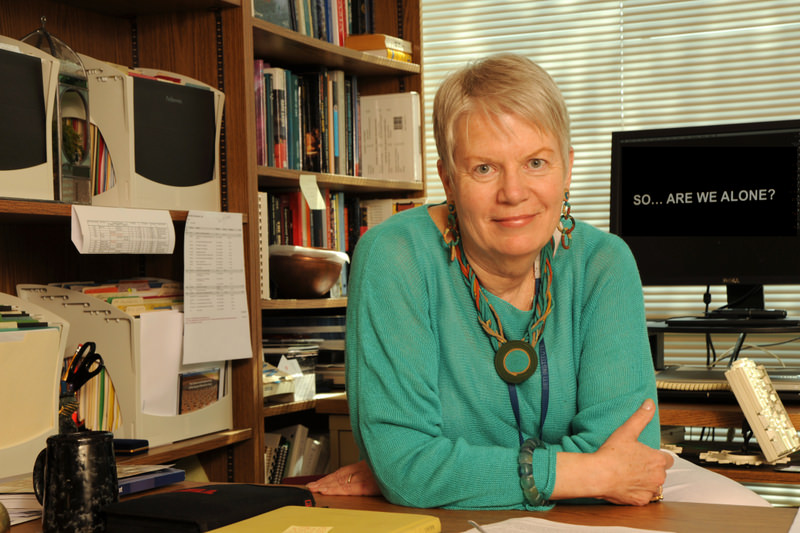[/caption]
After thirty-five years of listening for extra-terrestrial intelligence, astronomer Jill Tarter is stepping down from the research and will now be doing a more Earthly task: making sure there’s enough money for SETI to continue its search.
Tarter, who was the inspiration for the character Ellie Arroway in Carl Sagan’s novel and film “Contact,” announced today that Dr. Gerry Harp will step into the directorship role at SETI, “to continue our strong tradition of excellent research, freeing me up to focus on finding stable funding for it. I want to make the endowment of SETI research a success, so that my colleagues now, and in the future, can focus on the search for extraterrestrial intelligence for all of us.”
Tarter, 68, signed on to the NASA SETI program in the 1970s when a small group of NASA researchers were developing novel equipment and strategies to make systematic radio SETI observations. Since the decision by Congressional in 1993 to no longer fund the program, she has led the efforts at the non-profit SETI Institute to continue the work. Tarter spearheaded a decade-long program, dubbed Project Phoenix, that used large antennas in Australia, Puerto Rico and West Virginia to examine approximately one thousand nearby star systems over an unprecedented wide range of radio frequencies. Astronomers suspected that planets existed around other stars, but that was only a hypothesis – until 1995. Recently NASA’s Kepler telescope, launched in 2009, has discovered thousands of new planetary systems, some of them containing planets as small as the Earth.
“Kepler has been a paradigm shift—starting with the first data release in 2010 and second in 2011 and third in 2012, we have altered our SETI search strategy. We are no longer pointing our telescopes at Sun-like stars in hopes of finding something; we are now observing stars where we KNOW there are planets. Exoplanets are real. We’ve gone from having 20-30 potential targets to having thousands of targets. Kepler is telling us WHERE to look, and we are focusing there,” said Tarter.
SETI research is now only funded by private donations, “limiting how quickly we can search these newly discovered planets for intelligent life,” said Tarter. “The best reason to support SETI research is because it is an investment in our own future. The scientist Phil Morrison said that ‘SETI is the archeology of the future.’ Think about it. If we detect a signal, we could learn about THEIR past (because of the time their signal took to reach us) and the possibility of OUR future. Successful detection means that, on average, technologies last for a long time. That’s the only way another technological civilization can overlap with us in time and space. Understanding that it is possible to find solutions to our terrestrial problems and to become a very old civilization, because someone else has managed to do just that, is hugely important! Knowing that there can be a future may motivate us to achieve it.”
Tarter will be both celebrated and be one of the featured speakers at the gala dinner during the SETI Institute’s public event, SETIcon II, to be held at the Santa Clara Hyatt Hotel on June 22 – 24. See here for information on how to attend.
To give a donation to SETI, see their website.

